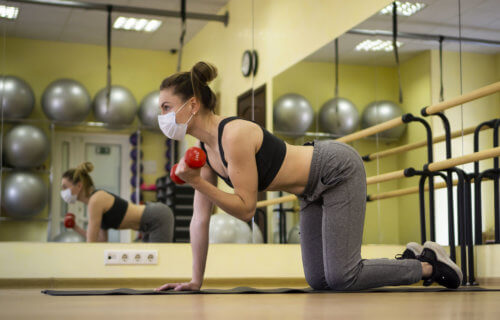MANSFIELD, Conn. — Researchers from the University of Connecticut find that wearing a face mask while exercising in warm temperatures won’t result in any additional heat stress.
Since last year, many have raised concerns over wearing face masks during strenuous activities, particularly in the heat. Now, Ayami Yoshihara, director of Sport Safety at UConn’s Korey Stringer Institute, has successfully showcased that exercising with a face mask on in hot conditions does not significantly increase either body temperature or heart rate.
Researchers tested four distinct types of face masks for this project: a surgical mask; an N95 respirator mask; a gaiter (covering from the nose to the neck); and a sports mask. None of those mask variations resulted in a notable uptick in body temperature or heart rate in comparison to a control group that wore no masks while working out.
Sport masks less effective for sports?
Study participants walked or jogged at a low-to-moderate-intensity level for a full hour in very hot conditions (90 degrees Fahrenheit) to facilitate this study.
To say health and safety guidelines throughout the pandemic have been confusing would be an understatement. Global, federal, state, and local authorities have frequently provided contrasting recommendations, leaving the world in desperate need of some scientific clarity. These findings will hopefully provide a little bit of stability, at least when it comes to the safety of wearing a mask during exercise. This study is the first to clearly show that wearing a mask while working out in warm weather is perfectly safe.
“Before this study no one knew if wearing a mask in the heat would add additional stress to an exercising individual. While we know masks are important to prevent transmission of COVID-19, we didn’t know if exercising with a mask in the heat, where your body is already managing additional stressors, would impact safety,” Yoshihara says in a university release.
Additionally, the team measured humidity and temperature on the inside and outside of each subject’s mask using sensors on the masks themselves. This led to the observation that sport masks and gaiters tend to become more humid than other mask types as the mask gradually absorbs more sweat and water vapor from exhaled air.
It’s worth reporting, however, that most participants did report feeling more uncomfortable while exercising with a face mask on. Ultimately, though, uncomfortable doesn’t mean unsafe.
“It’s feasible and safe to use masks during low to moderate intensity exercise in the heat,” Yoshihara concludes.
The study is published in Sports Health.
